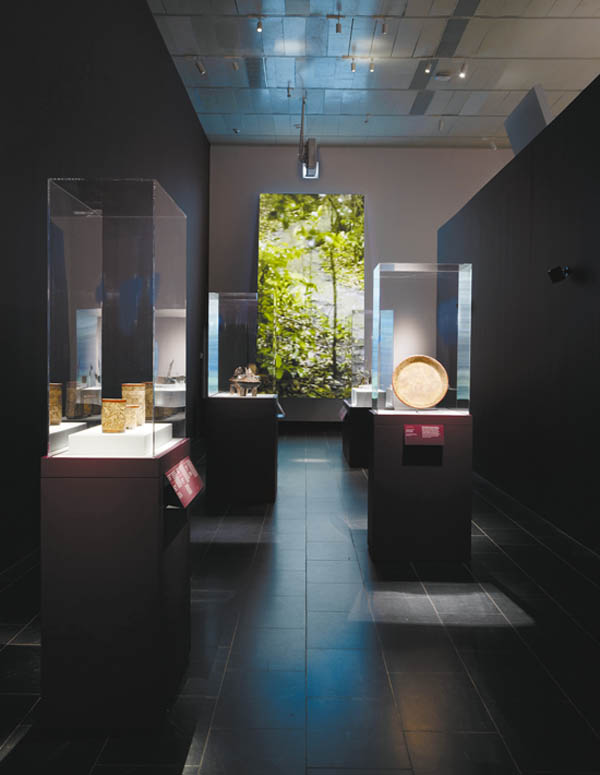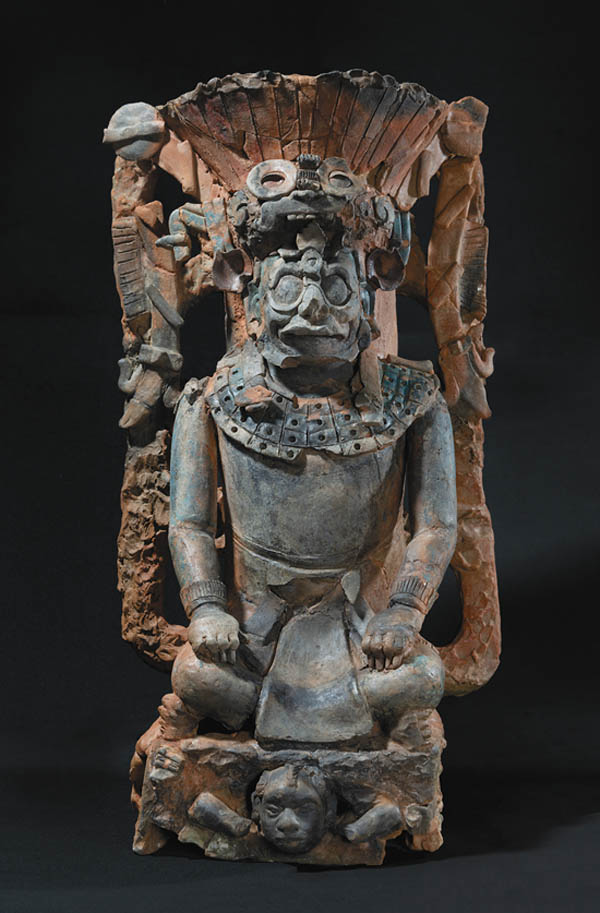Metropolitan Museum Of Art To Present First Major Exhibition Of Maya Art In The United States In A Decade
“Lives Of The Gods: Divinity In Maya Art” Will Feature Nearly 100 Masterpieces
January 06, 2023
In Maya art, one of the greatest artistic traditions of the ancient Americas, the Gods are depicted in all stages of life: as infants, as adults at the peak of their maturity and influence, and finally, as they age. The Gods could perish, and some were born anew, providing a model of regeneration and resilience. At The Metropolitan Museum of Art, the exhibition Lives of the Gods: Divinity in Maya Art brings together nearly 100 rarely seen masterpieces and recent discoveries in diverse media, from the monumental to the miniature, that depict episodes in the life cycle of the Gods, from the moment of their birth to resplendent transformations as blossoming flowers or fearsome creatures of the night. Created by masters of the Classic period (A.D. 250900) in the spectacular royal cities in the tropical forests of what is now Guatemala, Honduras, and Mexico, these landmark works evoke a world in which the divine, human, and natural realms are interrelated and intertwined. Lenders include major museum collections in Europe, Latin America, and the United States, and many of these works have never been exhibited in the U.S., including new discoveries from Palenque (Mexico) and El Zotz (Guatemala). Lives of the Gods invites us to experience the exhilarating and profound power of Maya visual artistry, said Max Hollein, Marina Kellen French director of The Met. This stunning exhibition presents spectacular works of art, many rarely seen, especially in New York, and compelling reflections on depictions of the divine; the importance of ancestral knowledge; and new understandings of Maya creative practices and the artists role in court society. This is sure to be a memorable show for our visitors. The exhibition was organized by The Metropolitan Museum of Art and the Kimbell Art Museum. Recent advances in the study of Maya hieroglyphs have made it possible to identify the names of dozens of artists from the Classic period, and for the first time in a major exhibition their names will be identified on labels. While artist signatures are scarce on ancient art across the world before the 19th century, Maya sculptors and painters did sign their works, occasionally prominently, on beautifully carved stone monuments and delicately ornamented vessels. Lives of the Gods will include four works by named individuals, including Panel with Royal Woman (ca. 795) by Kin Lakam Chahk and Jun Nat Omootz and Stela 51 of King Yuknoom Took Kawiil (731) by Sak... Yuk... Took and Sak ... Yibah Tzak Bahlam, as well as several examples that can be attributed to known Maya painters. These Maya artists gave form to the gods in inspired ways, through remarkable works of visual complexity and aesthetic refinement, said Joanne Pillsbury, Andrall E. Pearson curator of Ancient American Art, The Michael C. Rockefeller Wing at The Met. As archaeologists continue to make major discoveries, our knowledge of Classic Maya visual culture becomes enriched, and exhibitions, like this one, reveal new understandings of the relationships between ancient communities and the sacred. Exquisitely carved sculptures were believed to embody divine power and presence; ornaments of jadeite, shell, and obsidian once adorned kings and queens, symbolically connecting them to supernatural forces; and finely painted ceramics reveal the eventful lives of the Gods in rich detail. The exhibition is organized thematically, following the arc of the lives of the Gods and their place within a cosmological framework. The first section of the exhibition, Creations, presents mythical episodes related to the origin of the world. On Aug. 11, 3114 B.C., before the advent of cities and writing in this part of the world, inscriptions tell us that the deities were set in order, and the Gods placed stones in mythical locations. Maya kings replicated these divine actions at celebrations marking the ends of calendrical periods, each calculated at regular intervals from 3114 B.C. The section on Maize chronicles this Gods life, death, and rebirth through an assemblage of stunning and inventive masterpieces. The Maize God represented the beauty of the Maya staple crop and is often depicted by Maya artists as an eternally youthful, graceful being. The Maize God was also associated with two of the most valuable items in ancient Maya economies, jade and cacao. Episodes from the Maize Gods mythical saga appear on some of the ancient Americas finest ceramic vessels. Knowledge delves into the work of the scribes, who spent long years learning the intricacies of Maya writing and employed hundreds of signs in varied combinations, which can be seen throughout the exhibition. Only four of the books created in the pre-Hispanic period have endured to the present day, but texts that survive on relief sculptures and delicately painted ceramics provide a resource for understanding Classic Maya alliances, conquests, and spiritual beliefs. The final section on Patron Gods includes a striking series of works depicting kings and queens taking on various aspects and attributes of the Gods. Maya artists created monumental sculptures to celebrate events and depict the perceived connection between rulers and the Gods. Freestanding slabs known as stelae stood in the large plazas of Maya cities, and some of these sculptures bear the signatures of sculptors. Also on display will be a remarkable lintel, a horizontal support spanning a doorway, made of zapote wood. There are few Maya works carved in wood in antiquity that survive to the present day, and this lintel represents a celebration in the wake of the victory of Tikal (and its king Yihkin Chan Kawiil) over rival Naranjo. Sculptures and vessels in the exhibition demonstrate the intimate relationship between Maya royalty and the Gods and underscore the role of religion in the establishment and maintenance of Maya political authority. After its showing at The Met (currently on view) the exhibition will travel to the Kimbell Art Museum, Fort Worth, Texas, May 7 to Sept. 3, 2023. Lives of the Gods: Divinity in Maya Art is one of a series of special exhibitions and installations that will present art of the ancient Americas, sub-Saharan Africa, and Oceania while the Michael C. Rockefeller Wing is closed for a renovation project that will reenvision these collections for a new generation of visitors. This exhibition will be an opportunity to see several extraordinary works from the museums collection of ancient American art alongside exceptional loans that deepen our understanding and appreciation of Classic Maya art and spotlight the significant collaboration between The Met and colleagues across the world. An important thematic component of the new galleries will be to highlight the artistic virtuosity of this region of the world through foregrounding authorship, also a key subject in this exhibition. Additionally, two massive stelae, both long-term loans from the Republic of Guatemala, will remain on view in The Mets Great Hall. The stelae feature representations of influential Indigenous American rulers: a king, Kinich Yonal Ahk II (ca. A.D. 664729), and queen, Ix Wak Jalam Chan (Lady Six Sky) (ca. A.D. 670s741), one of the most powerful women known by name from the ancient Americas. A lavishly illustrated catalogue, published by The Metropolitan Museum of Art and distributed by Yale University Press, accompanies the exhibition. To learn more, visit www.metmuseum.org.









SHARE
PRINT